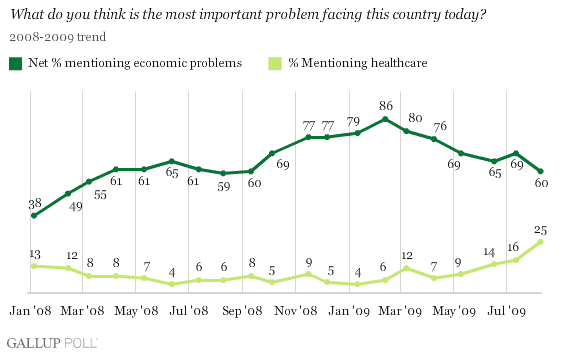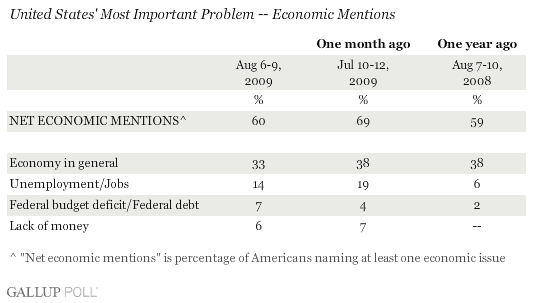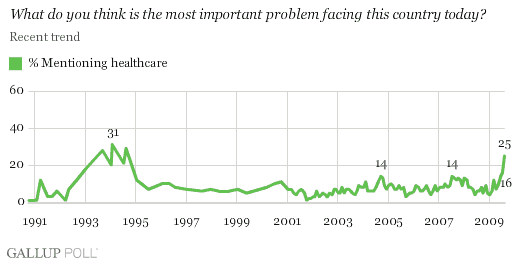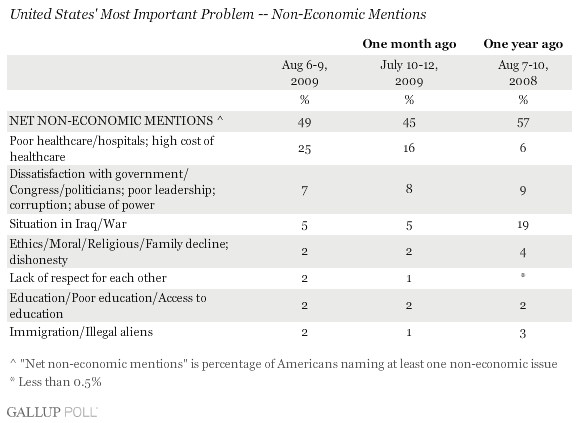WASHINGTON, D.C. -- At the same time that more Americans say , the percentage who name an economic issue as the most important problem facing the country is down to 60% from 69% a month ago. Meantime, the healthcare debate is turning more attention to that issue, with 25% now calling it the country's most important problem -- up from 16% a month ago.

The percentage of Americans naming an economic issue as the most important problem facing the country remains high but has been decreasing steadily from a high of 86% in February. The current reading matches the 60% recorded Sept. 8-11, 2008, before economic bankruptcies and bailouts began in earnest in mid-September of last year. An even higher 65% named an economic issue in June 2008, driven in large part by high concern about fuel/oil prices at that time.
Looking at Americans' specific economic concerns now, the percentage who name the economy in general is down slightly, to 33% from 38% a month ago. Mentions of unemployment are also down, to 14% from 19%, while mentions of the federal budget or budget deficit are up slightly, to 7% from 4% -- reflecting Americans' high level of .

Healthcare Now Top of Mind
The reform debate raging in Washington, on television news, and in across America is clearly putting the spotlight on that issue, and may in part be the reason fewer Americans this month mention the economy as the nation's top problem. One in four (25%) now call healthcare the country's most important problem -- up from 16% a month ago and 6% a year ago. The spike in the percentage of Americans mentioning healthcare is similar to what ���۴�ýrecorded when the Clinton administration made its attempt at healthcare reform in the early '90s -- though mentions have not yet reached the high of 31% recorded in January 1994.

After healthcare, dissatisfaction with government/politicians continues to rank second on the list of non-economic issues.

Survey Methods
Results are based on telephone interviews with 1,010 national adults, aged 18 and older, conducted Aug. 6-9, 2009. For results based on the total sample of national adults, one can say with 95% confidence that the maximum margin of sampling error is ±4 percentage points.
Interviews are conducted with respondents on land-line telephones (for respondents with a land-line telephone) and cellular phones (for respondents who are cell-phone only).
In addition to sampling error, question wording and practical difficulties in conducting surveys can introduce error or bias into the findings of public opinion polls.
